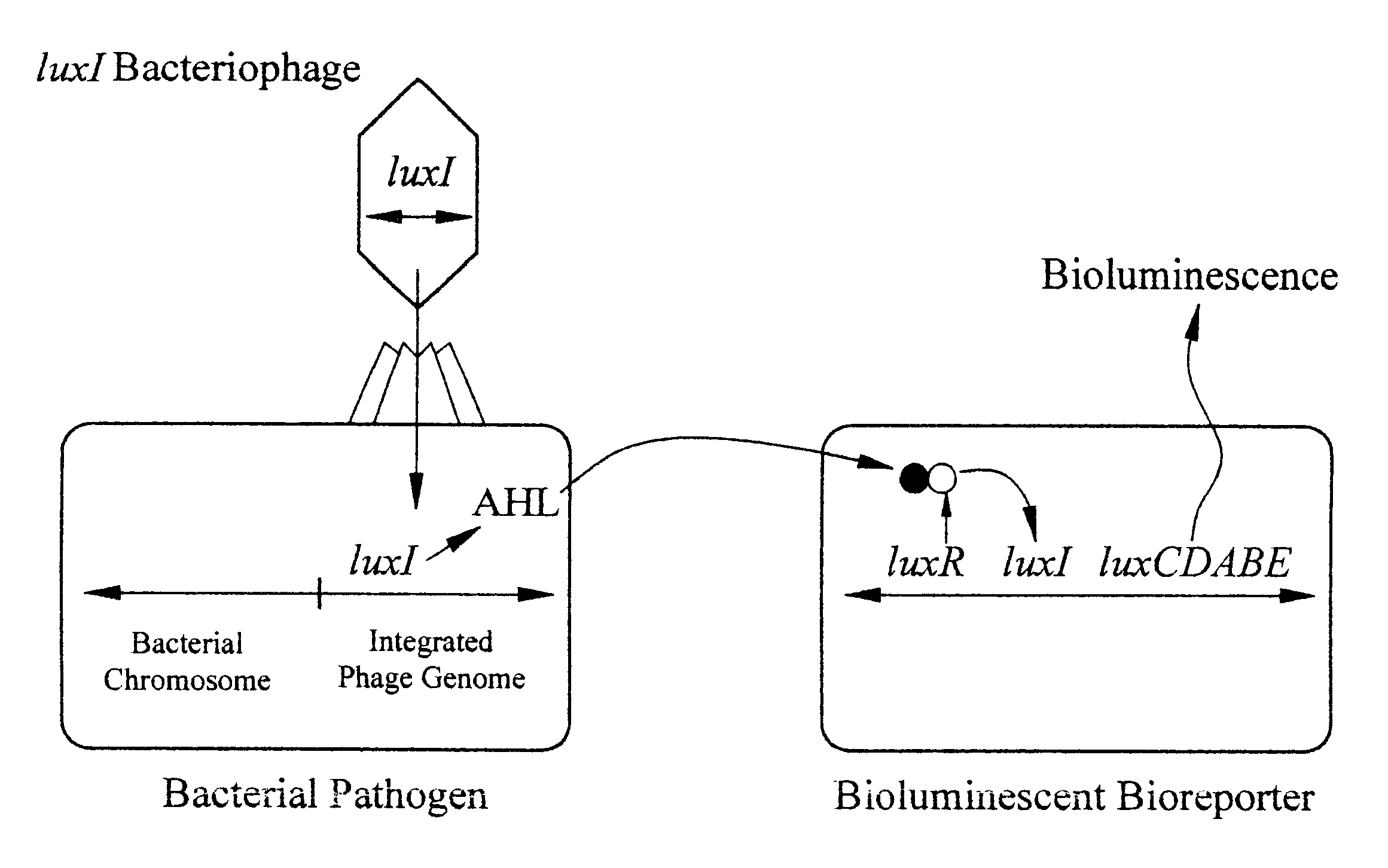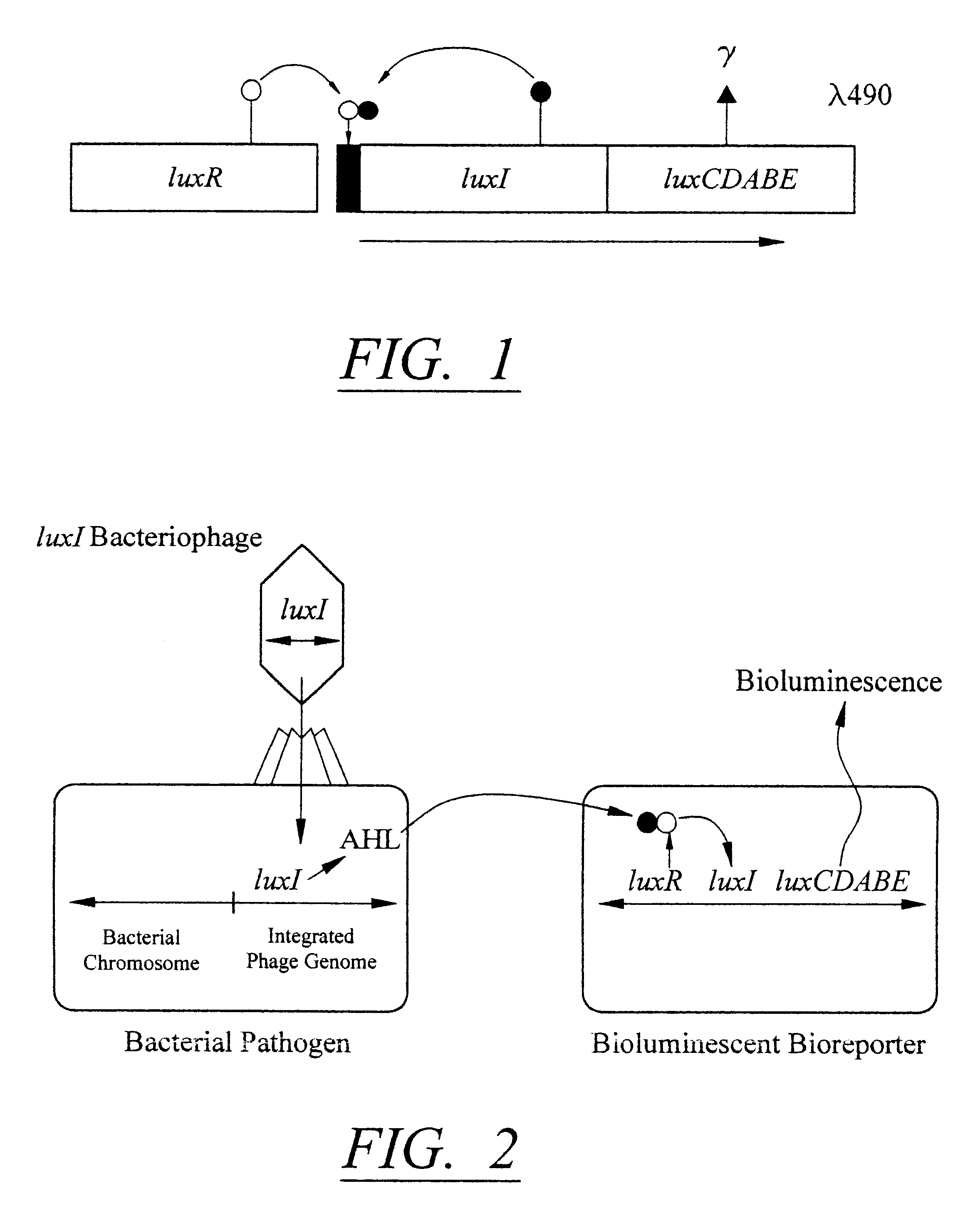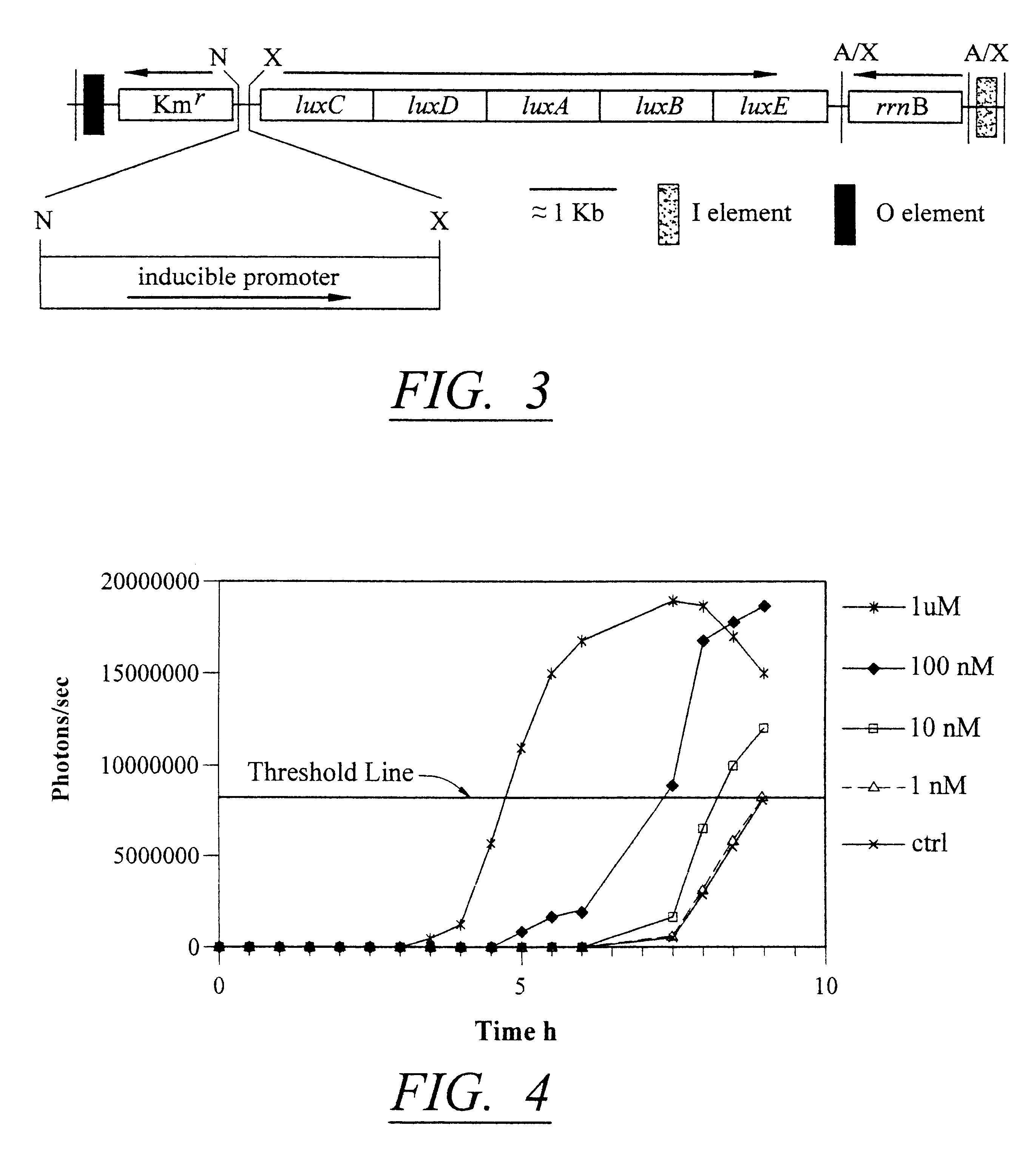Bioluminescent biosensor device
a biosensor and bioluminescent technology, applied in the direction of fluorescence/phosphorescence, instruments, analysis using chemical indicators, etc., can solve the problems of large instrument anchored to power and optic cables, slow and inefficient methods, and general unsuitability for field use of instruments, etc., to achieve less responsive to stress
- Summary
- Abstract
- Description
- Claims
- Application Information
AI Technical Summary
Benefits of technology
Problems solved by technology
Method used
Image
Examples
example 1
5.1 Example 1
Amplification of Bioluminescent Signal in Bioreporter Cells
The detection scheme for quantifying pathogenic targets relies on the ability of AHL molecules to induce bioluminescence in such a manner that it can be correlated with the original number of AHL-producing targets present in the sample. The technique uses the same premise as quantitative PCR with the exception that initial AHL concentrations, as opposed to nucleic acid concentrations, allow for differential detection of the exponential increase in signal, i.e. bioluminescence, in the reporter cells (Heid et al., 1996).
Amplification of the bioluminescent response of the bioreporter cells occurs through the autoinduction mechanism of V. fischeri AHL is released into the extracellular environment following target cell infection by the biosensor, i.e a luxI-bacteriophage. Uptake of AHL by neighboring bioluminescent bioreporter cells induces light production in the latter cells, as well as production of more AHL. Thi...
example 2
5.2 Example 2
Exemplary Strains of LuxI Bacteriophage
Because the genomes of L. monocytogenes phage A511 and A118 have been characterized, luxI integration in these bacteriophage is therefore accomplished through homologous recombination. The basic strategy follows that of the A511::luxAB phage described by Loessner et al., (1996). The luxI construct developed as described in section 4.3.2, with appropriate ribosome binding sites for L. monocytogenes, is amplified with a set of primers containing flanking DNA sequences at the 3' end of the cps gene in phage A511 and A118. The product is amplified and subsequently inserted into the phage by recombination, and bacteriophage are screened and enriched essentially as described by Loessner et al., (1996). Since the production of AHL is the phenotype of choice, supernatants of primary lysates are examined for their ability to induce the lux genes in the reporter strain. The selected phage containing luxI is verified using RFLP analysis.
For u...
example 3
5.3 Example 3
Detection of Bacterial Pathogens in Food
Four pathogens of particular concern to the food industry include Salmonella, Listeria monocytogenes, Escherichia coli O157:H7, and Campylobacter. Based on recent estimates, these four bacterial types cause two-thirds of all food-related deaths in the U.S., and more than 95% of food-related deaths caused by bacteria (Mead et al., 1999). Salmonella-related illness has been linked to cantaloupe (Riess et al., 1990), alfalfa sprouts (Mahon et al., 1997), tomatoes (Hedberg et al., 1994) and watermelon (del Rosario et al., 1995). Salmonella has also been isolated from a wide variety of fresh vegetables, including artichoke, cabbage, cauliflower, celery, eggplant, endive, fennel, lettuce mustard cress, parsley, and spinach (Sumner and Peters, 1997).
Listeria monocytogenes causes serious human disease manifested by sepsis and meningitis. It is commonly found on vegetables (Beuchat, 1996), including lettuce (Beuchat and Brackett, 1990), to...
PUM
| Property | Measurement | Unit |
|---|---|---|
| Volume | aaaaa | aaaaa |
| Volume | aaaaa | aaaaa |
| Volume | aaaaa | aaaaa |
Abstract
Description
Claims
Application Information
 Login to View More
Login to View More - R&D
- Intellectual Property
- Life Sciences
- Materials
- Tech Scout
- Unparalleled Data Quality
- Higher Quality Content
- 60% Fewer Hallucinations
Browse by: Latest US Patents, China's latest patents, Technical Efficacy Thesaurus, Application Domain, Technology Topic, Popular Technical Reports.
© 2025 PatSnap. All rights reserved.Legal|Privacy policy|Modern Slavery Act Transparency Statement|Sitemap|About US| Contact US: help@patsnap.com



